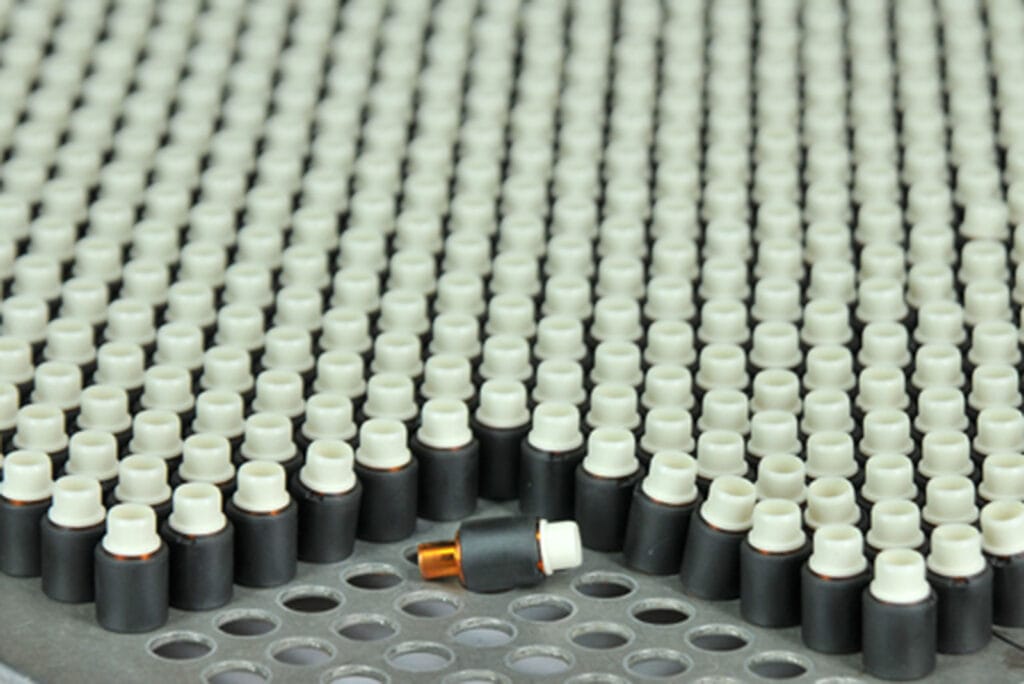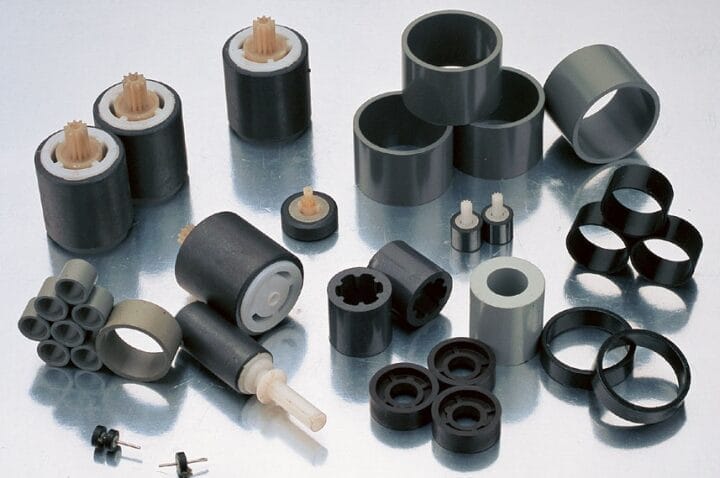Introduction
Imagine magnets that are not only powerful but also precisely shaped to fit any design you can imagine. This is the magic of injection molded magnets, a game-changing technology that allows for intricate and high-performance magnetic components to be produced with unparalleled precision. From the tiny sensors in your smartphone to the robust parts in electric vehicles, injection molded magnets are at the heart of modern innovation. In this article, we’ll dive into the fascinating process behind these magnets, revealing how advanced techniques turn raw materials into the high-tech components that power today’s technology.
1. Material Preparation
The foundation of high-quality injection molded magnets is the careful preparation of magnetic materials. This process begins with selecting the appropriate magnetic powders and binders.
1.1. Magnetic Powders
Magnetic powders are the core component of the injection molded magnet. Common materials include ferrite and rare earth materials, such as neodymium-iron-boron (NdFeB) and samarium-cobalt (SmCo).
Ferrite Powders: Typically used for their cost-effectiveness and good magnetic properties. They are ceramic materials that are generally made from iron oxide combined with other elements.
Rare Earth Powders: Provide superior magnetic strength and are used when high performance is needed. NdFeB, for example, is known for its strong magnetic field and high coercivity.
The choice of powder depends on the desired magnetic properties and application requirements.
1.2. Binders
Binders are materials added to the magnetic powders to create a composite that can be easily molded. These binders hold the magnetic particles together and provide the necessary flow characteristics during the injection process. Common binders include thermoplastic resins, such as nylon and polypropylene, or thermosetting resins like epoxy.
1.3. Mixing and Granulation
Once the powders and binders are selected, they are mixed to create a uniform composite material. This mixture is then granulated into small pellets, which are easier to handle and feed into the injection molding machine.
2. Injection Molding Process
The injection molding process involves several key stages that transform the composite material into a finished magnet.
2.1. Heating and Injection
In the injection molding machine, the composite pellets are fed into a heated barrel where they are melted. The molten material is then injected into a mold cavity under high pressure. The design of the mold dictates the shape and dimensions of the final magnet.
2.2. Mold Design
Mold design is crucial for ensuring that the magnet meets its specified requirements. The mold must be designed to accommodate the thermal and mechanical stresses involved in the molding process. It typically consists of two parts: the cavity (which shapes the magnet) and the core (which forms the internal features).
2.3. Cooling and Solidification
After the molten material is injected into the mold, it must cool and solidify. The cooling process is carefully controlled to ensure uniform solidification and to prevent defects such as warping or uneven magnetization. Cooling channels within the mold help to dissipate heat and speed up the solidification process.
2.4. Ejection
Once the material has solidified, the mold is opened, and the finished magnet is ejected. The ejection system ensures that the magnet is removed without causing damage to its surface or shape.
3. Post-Molding Processes
After the injection molding process, several post-molding procedures may be required to ensure the magnet’s optimal performance.
3.1. Trimming and Deburring
Some magnets may have excess material or burrs from the molding process. These are removed through trimming and deburring to ensure a clean and precise final product.
3.2. Surface Finishing
Surface finishing processes, such as polishing or coating, may be applied to improve the appearance and durability of the magnet. Coatings can also enhance corrosion resistance and provide additional protection.
3.3. Magnetization
Magnetization is a critical step in which the magnet is exposed to a strong magnetic field to align the magnetic domains and achieve the desired magnetic properties. This process is typically performed using a magnetizing machine that generates a powerful magnetic field.
4. Quality Control
Ensuring the quality of injection molded magnets is essential for their performance and reliability. Several quality control measures are implemented throughout the production process.
4.1. Material Testing
Before production begins, the composite material is tested for its magnetic properties, flow characteristics, and thermal stability. This ensures that the material will perform as expected during molding.
4.2. Dimensional Inspection
Finished magnets are inspected for dimensional accuracy to ensure they meet the specified tolerances. This includes measuring the magnet’s size, shape, and surface finish.
4.3. Magnetic Performance Testing
Magnetic performance is assessed to confirm that the magnet exhibits the required magnetic strength and other properties. Tests may include measuring the magnetic field strength, coercivity, and remanence.
4.4. Endurance Testing
To evaluate the magnet’s long-term performance, endurance tests are conducted. These tests simulate the operating conditions to ensure that the magnet maintains its properties over time.
5. Applications of Injection Molded Magnets

Injection molded magnets are used in various applications due to their versatility and precise manufacturing capabilities.
5.1. Electronics
In the electronics industry, injection molded magnets are used in components such as sensors, speakers, and magnetic connectors. Their ability to be molded into complex shapes makes them ideal for integration into compact electronic devices.
5.2. Automotive
Automotive applications include electric motors, sensors, and actuators. The high precision and reliability of injection molded magnets make them suitable for critical automotive components.
5.3. Consumer Products
In consumer products, injection molded magnets are used in items like refrigerator magnets, magnetic clasps, and toys. Their customizable shapes and cost-effectiveness make them popular in this sector.
6. Challenges and Solutions
Despite the advantages of injection molded magnets, there are challenges associated with their production.
6.1. Material Selection
Selecting the right material for specific applications can be challenging. Ongoing research and development efforts aim to improve material properties and expand the range of available options.
6.2. Molding Defects
Defects such as air bubbles, voids, and warping can occur during the molding process. Advanced molding techniques and quality control measures help mitigate these issues.
6.3. Cost Considerations
While injection molding is cost-effective for large volumes, the initial setup costs for molds and equipment can be high. Manufacturers must balance these costs with the benefits of high-volume production.
7. Future Trends and Innovations
The field of injection molded magnets is evolving, with several trends and innovations on the horizon.
7.1. Advanced Materials
Research into new magnetic materials and composites aims to enhance performance and reduce costs. Innovations in material science could lead to stronger and more versatile magnets.
7.2. Enhanced Molding Techniques
Advancements in molding technology, such as improved mold designs and automation, are expected to increase production efficiency and reduce defects.
7.3. Sustainable Practices
Sustainability is becoming a key focus, with efforts to reduce waste, improve recycling, and lower the environmental impact of magnet production.
Conclusion
Injection molded magnets represent a significant advancement in magnet manufacturing, offering precise control over shape and performance. By understanding the detailed production process—from material preparation to post-molding procedures—manufacturers can produce high-quality magnets that meet the demands of various applications. Ongoing innovations and improvements in materials and technology promise to further enhance the capabilities and efficiency of injection molded magnets, making them a vital component in modern technology.


